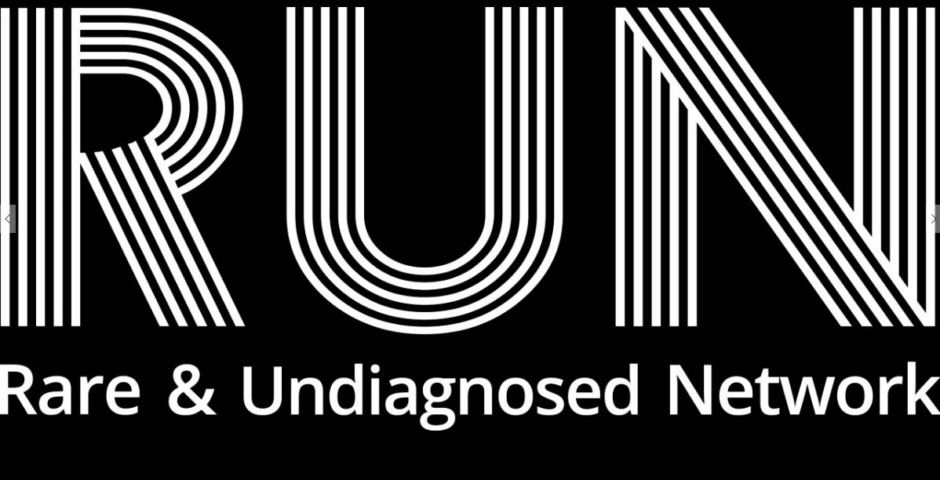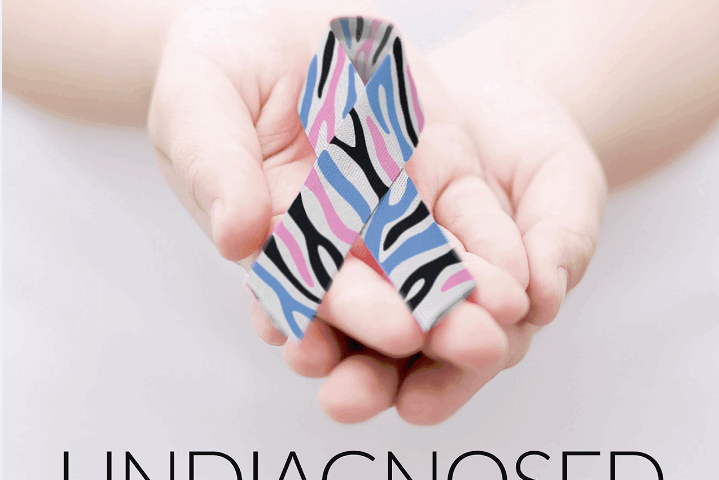Update: UNDIAGNOSED IS OUR DIAGNOSIS: Living in a Diagnostic Odyssey x 4
My children: Ava, Oskar, and Lucy have been undiagnosed for the past 14 years as of the end of 2024. All three children and I suffer from an undiagnosed autonomic neuropathy, an undiagnosed genetic dysfunction. We have a constellation of symptoms and have had extensive diagnostic testing, including clinical exome sequencing and genome sequencing with repeated negative results even with reanalyses. Our family advocates for undiagnosed, rare, invisible, and chronic diseases.
Ava
In 2007, Ava was born healthy. When Ava was three years old, we found an arachnoid cyst. In 2012, Ava started to have different symptoms. Her hands turned red and the redness spread throughout her limbs. She had temperature control issues, headaches, fatigue and she had “mast cell like” rashes. Ava started in rheumatology, on to dermatology and ended up in neurology. We were told from our neurologist that Ava was undiagnosed and that we would never find the root cause to her disease process. She would only be treated for her symptoms. In 2013, Ava had a subdural hygroma. She had papilledema and her spinal pressure was 55. She was about to go blind, and death was knocking on her door. She had four cranial surgeries. She had two external drains, which failed. She had an arachnoid cyst fenestration that also failed. She became shunt dependent. Ava also suffers from eosinophilic esophagitis, undiagnosed autonomic neuropathy, undiagnosed small fiber polyneuropathy, dysautonomia and Postural Orthostatic Tachycardia Syndrome (POTS). She has been on a diagnostic odyssey for 13 years as of the end of 2023. She has no hope for a treatment or a cure. She will continue to treat her symptoms and make adjustments to her lifestyle in order to graduate high school and college. We have found sleep to be her only positive treatment.
Oskar
Oskar was born in 2009. He started to have issues that we noticed dramatically progressing at the age of three. We had a workup done for fatigue, leg pain, low-grade fever, motility issues, redness, rashes, temperature intolerance and many other symptoms. I always said that the kids would start out the mornings pale as ghosts. By the evening hours, they were all bright red. Oskar would fall asleep during dinner. We would be at a fun event, like a circus or the horse tracks, and he would fall asleep in our arms. The heat and the sensory issues surrounding him would shut him down completely. He does not like to be around large crowds, lights, or loud noises. He prefers the calm of his room. Oskar suffers from an undiagnosed genetic dysfunction, an undiagnosed autonomic neuropathy, and dysautonomia. His body does not produce sweat in many places. He has had countless exams, procedures and still we have no answers. We treat his symptoms as best as we can. Oskar lives with pain and fatigue every single day like Ava.
Lucy
Lucy was born in 2011. She started showing symptoms when she was 18 months old. She presented with fatigue, motility issues, abdominal pain, temperature intolerance, as well as redness and pain in her hands, legs and her feet. Lucy is going through puberty right now and we can tell she is progressing. She is having trouble breathing. Her brain is not signaling for her to breathe. As mentioned earlier, we all continue to have a complicated web of symptoms. Not one of us is the exact same as the others. Lucy suffers from complex migraines with visual complications as well as catching every virus that comes her way.
Child Commonalities
We are grateful that all of the children are high-functioning, and very good students. All three kids prefer to lay flat in bed or on a sofa. They need at least 12 hours of sleep each night for them to function well during school. Their autonomic nervous system (ANS) does not work properly. These conditions can lead to a dysautonomic crisis, which involve rapid fluctuations in blood pressure, heart rate and complete digestive shutdown. There is no magic pill. Today, there is no possibility of a treatment or a cure. It can be crushing psychologically for us that there is no immediate solution. Not having an answer animates the uncertainty of our “undiagnosed diagnosis”.
Gina
I was born in 1973. I started having issues when I gave birth to Ava. I was “on fire” after my c-section. I kept the room at 55 degrees, but my body felt like it was 105 degrees in there. During Ava’s head trauma and cranial surgeries, my body went to a whole new level of instability. My distal joints all popped, and I lost the strength in my hands. I felt like I was having a heart attack every single day. I have an undifferentiated connective tissue disease and inflammatory arthritis. I have aggressive, progressive and erosive OA (osteoarthritis) of both hands, EOE (eosinophilic esophagitis), FMD (fibromuscular dysplasia), poikiloderma, myoclonus, HTN (hypertension), MALS (Median Arcuate Ligament Syndrome), dysautonomia, POTS (postural orthostatic tachycardia syndrome), nocturnal hypoxia, sleep apnea, dyspnea, DDD (degenerative disc disease) lumbosacral, cervical spondylosis without myelopathy, lymphocytic colitis, anticardiolipin antibody positive and myopia with presbyopia of both eyes. I have blood levels off but not in a way that fits with any known diagnosis. I live in pain every day and continually have nerve ablations in my C2 – T1. I am in physical therapy every single week. I have no hope for a treatment or a cure in my lifetime.
Summary
As my children continue to grow and mature, they are learning to live with their as yet
“undiagnosed diagnosis” and to adjust their lifestyles to make the best of their own unique medical situation.
We have paused being “treasure hunters” and have been working to accept our daily rigors as undiagnosed patients.
Our advocacy work has enriched our journey. In 2014, we created the Rare and Undiagnosed Network (RUN), a 501c3 nonprofit located in Salt Lake City, Utah. RUN’s mission is to empower rare and undiagnosed patients and their families with genomic information and community through advocacy, networking, and support. RUN gave our family and many other families a platform to share their journey as well as to build a network of rare and undiagnosed stakeholders not only in our state but nationally and internationally. Our strategy is to bring people together to break down silos, create collaboration and global cooperation. You can learn more about our advocacy work and our journey at www.rareundiagnosed.org.
If there is any advice I can offer to other families starting on their diagnostic odyssey, it is to give your family time to heal from the loss of a typical healthy lifestyle and to encourage families to take breaks from the constant pressure to hunt for a diagnosis (“treasure”).
Almost 70% of undiagnosed patients never receive a diagnosis.
Lastly, I urge families to find the people they need to lean on for support during this journey. We continue to raise awareness not only for the undiagnosed rare community, but also for invisible and chronic illnesses. There is still much work to be done, and we are honored to continue our journey with the support of genomics and genetic counselors.
Update in February 2024: Ava, Oskar and Lucy were all diagnosed with Polycystic kidney disease (ADPKD). Autosomal dominant polycystic kidney disease (ADPKD) is the most common form of PKD. ADPKD affects 1 in every 400 to 1,000 people and is the most common kidney disorder passed down through family members. “Autosomal dominant” means you can get the PKD gene mutation, or defect, from only one parent. Researchers have found two different gene mutations that cause ADPKD. Most people with ADPKD have defects in the PKD1 gene, and 1 out of 6 or 1 out of 7 people with ADPKD have a defective PKD2 gene. Their father, Justin, was diagnosed with ADPKD in October 2023. He had a successful kidney transplant on April 2nd, 2024. Ava, Oskar and Lucy will all have to have a kidney transplant in their lifetime.
RUN’s Mission: RUN stands for the Rare & Undiagnosed Network. We’re a group of advocates, patients, families, researchers, and healthcare providers who share the same mission and vision: To empower rare and undiagnosed patients and their families with genomic information and community through advocacy, networking and support.
Contact information: Gina Zanik (Szajnuk)
Co-founder and Executive Director, Rare and Undiagnosed Network (RUN)
Vice Chair, Utah Rare Disease Advisory Council (RDAC)
W www.rareundiagnosed.org
E ginaszajnuk@gmail.com P (310) 883-4353
To Read: A mother’s unrelenting crusade to help those trapped in the wilderness of the undiagnosed – by Lee Benson
To Read: “What is the hardest part of being undiagnosed?” by Gina Szajnuk
To Read: “Undiagnosed is a Diagnosis” by Ava and Gina Szajnuk
To Read: The Szajnuk Journey
To Read: “Push Through” by Ava Szajnuk
To Listen: RARE Cast by Global Genes: “A Young Rare Disease Advocate Discusses Life with an Undiagnosed Condition”
More Media:
To Read: How Utah Jazz GM Justin Zanik found himself fighting for not just his team, but his life – ESPN
To Listen: ESPN Daily: How a Family’s Bond Saved the Jazz GM
To Watch: Fox 13 News “Undiagnosed”
To Watch: RUN’s Two Year Anniversary Video by Small Forces
To Watch: RUN’s One Year Anniversary Video
To Watch: #UndiagnosedDay RUN’s 2016 Video


About

Gina Zanik (Szajnuk) started her career in the entertainment industry. She worked in Hollywood for over ten years. She supported movie directors, producers, actors, literary agents and executives. She entered the world of the NBA and NFL and served as Director of Client Services and Executive Assistant to the CEO at Priority Sports & Entertainment in Chicago. She supported the President of Basketball Operations at U1st Sports, an NBA and European basketball agency. She worked in corporations supporting VP, President, and CEO level executives for five years in Los Angeles and Manhattan. She now serves as the Founder and Executive Director for the Rare and Undiagnosed Network (RUN), a 501©3 nonprofit organization in Salt Lake City formed in 2014. Her three children, each of whom live with a chronic, invisible, and undiagnosed rare disease, continue to inspire, and motivate her to empower patients and their families with genomic information and community through advocacy, networking, and support. Gina is also living with a chronic, invisible and undiagnosed rare disease. She serves as the Vice-Chair of the Utah Rare Disease Advisory Council (RDAC). She is a member of the Undiagnosed Disease Network International (UDNI). In 2016, Gina was the Chair of Utah Rare and was on the Executive Committee for four years. Gina continuously works to build a network of rare advocates, geneticists, researchers, specialists, and volunteers who can come together under one platform. In 2016, RUN started the international Undiagnosed Rare Disease Day (Undiagnosed Day) awareness campaign on April 29th. She was a member of the Participant Engagement and Empowerment Resource (PEER) of the Undiagnosed Diseases Network (UDN) for two years. She served as the National Organization for Rare Disorders (NORD) as their Utah State Ambassador and then as their Undiagnosed Advocacy Ambassador for four years. She is a public speaker and published writer. In 2016, Gina won the Rare Voice Award from the EveryLife Foundation for Rare Diseases as well as accepted the Rare Champion of Hope – Advocacy Award from Global Genes. She is married to Justin Zanik, the NBA Utah Jazz General Manager. Gina has brought awareness to the public about the importance of undiagnosed and rare diseases through RUN’s NBA Initiative started in 2015. She was born and raised in Madison, WI. She graduated with a Bachelor of Arts from the University of Wisconsin – Madison.
(Photo by Season Atwater Photography)

